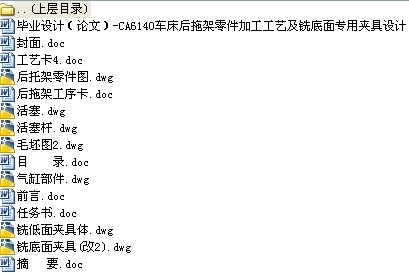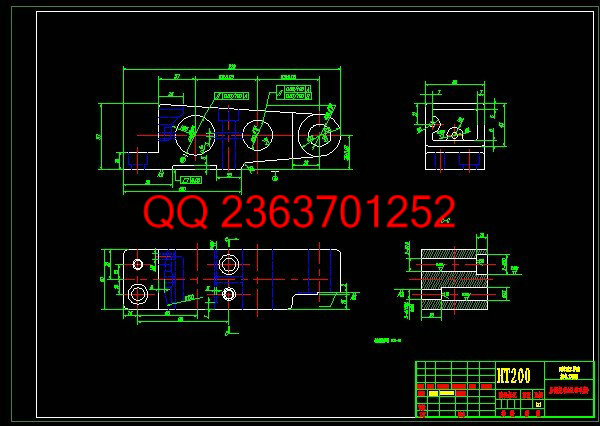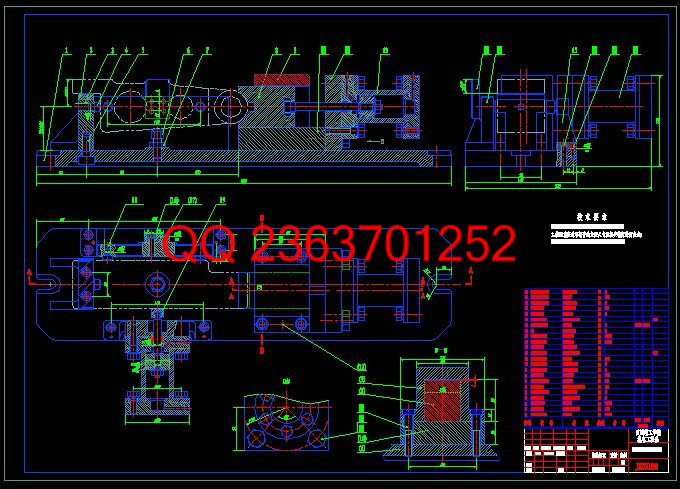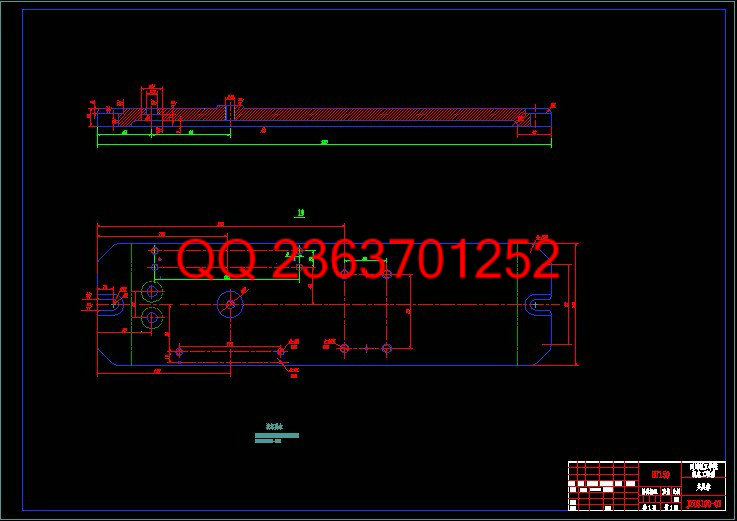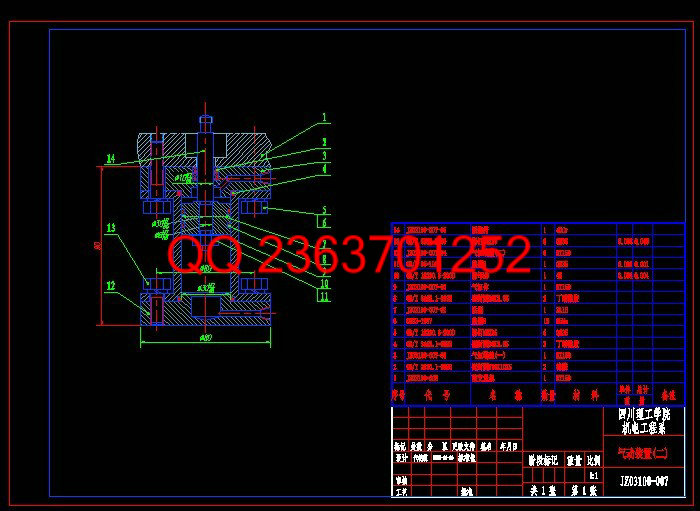|
设计描述:
文档包括:
Word版说明书一份,共42页,约13000字
外文翻译一份
CAD版本图纸,共7张:
工艺卡片一套
过程卡片一套
毕业设计(论文)任务书
设计(论文)题目: CA6140车床后拖架零件加工工艺及铣底面专用夹具设计
接受任务时间 2007年3月5日
教研室主任 (签名) 系主任 (签名)
1.毕业设计(论文)的主要内容及基本要求
1. 零件图一张, 毛坯图一张
2. 夹具装配图一份, 夹具零件图一套
3. 机械加工工艺卡一套, 主要工序工序卡一份
4. 设计说明书一份。
2.原始数据
零件图一张, 生产纲领10000件
3.指定查阅的主要参考文献及说明
1. 《机械制造工艺手册》
2.《机械零件设计手册》
3.《夹具设计手册》
摘 要
在生产过程中,使生产对象(原材料,毛坯,零件或总成等)的质和量的状态发生直接变化的过程叫工艺过程,如毛坯制造,机械加工,热处理,装配等都称之为工艺过程。在制定工艺过程中,要确定各工序的安装工位和该工序需要的工步,加工该工序的机车及机床的进给量,切削深度,主轴转速和切削速度,该工序的夹具,刀具及量具,还有走刀次数和走刀长度,最后计算该工序的基本时间,辅助时间和工作地服务时间。
本文对CA6140车床后托架进行了结构和工艺分析,确定了机械加工工艺路线,制订出了零件的制造工艺方案和机械加工工艺规程,并为加工零件上底平面设计了一套专用铣床夹具。
关键词 工序,工艺,工步,加工余量,定位方案,夹紧力
ABSTRACT
Enable producing the target in process of production (raw materials, the blank , state of quality and quantity on part become always ) take place direct course of change ask craft course, if the blank is made, machining, heat treatment , assemble etc. and call it the craft course. In the course of making the craft , is it confirm every erector location and worker step that process need this of process to want, the locomotive of processing , this process , and the entering the giving amount of the lathe, cut depth , the rotational speed of the main shaft and speed of cutting, the jig of this process, the cutter and measuring tool, a one hundred sheets of number of times still leaves and a one hundred sheets of length leaves, calculate basic time of this process , auxiliary time and service time of place of working finally.
CA6140 lathe to stand here after a technical analysis of the structure and to determine the mechanical machining line, develop a parts manufacturing processes of the programme and mechanical machining and components for the processing of facing design of a milling machine jig.
Keywords: The process, worker one, worker's step , the surplus of processing, orient the scheme , clamp strength
目 录
中文摘要...........................................................................Ⅰ
英文摘要...........................................................................Ⅱ
第 1 章 CA6140机床后托架加工工艺............................................. 1
1.1 CA6140机床后托架的作用及简要分析.............................................1
1.2 CA6140机床后托架的工艺要求及工艺分析.........................................1
1.2.1 CA6140机床后托架的技术要求..............................................2
1.2.2 确定毛坯的制造形式.......................................................2
1.3 加工工艺过程..................................................................2
1.4 确定各表面加工方案............................................................3
1.4.1 在选择各表面及孔的加工方法时,要综合考虑以下因素..........................3
1.4.2平面的加工................................................................3
1.4.3孔的加工方案..............................................................4
1.5 确定定位基准.................................................................4
1.5.1 粗基准的选择.............................................................4
1.5.2 精基准选择的原则.........................................................5
1.6工艺路线的拟订... .............................................................6
1.6.1 工序的合理组合...........................................................6
1.6.2 工序的集中与分散.........................................................6
1.6.3 加工阶段的划分...........................................................7
1.6.4 加工工艺路线方案的比较...................................................8
1.7 CA6140机床后托架的偏差,加工余量,工序尺寸及毛坯尺寸的确定.................... 10
1.7.1 毛坯的结构工艺要求......................................................10
1.7.2 CA6140机床后托架的偏差计算..............................................11
1.8确定切削用量及基本工时(机动时间).............................................14
1.8.1 工序1:粗、精铣底面.....................................................14
1.8.2 工序2 粗、半精、精镗CA6140侧面三杠孔....................................16
1.8.3 工序3:钻顶面四孔.......................................................22
1.8.4 工序4:钻侧面两孔.......................................................26
1.9 时间定额计算及生产安排.......................................................28
1.9.1 粗、精铣底面............................................................28
1.9.2 镗侧面三杠孔............................................................29
1.9.3 钻顶面四孔..............................................................30
第二章 专用夹具设计..............................................................32
2.1 铣平面夹具设计...............................................................32
2.1.1 研究原始质料............................................................32
2.1.2 定位基准的选择..........................................................32
2.1.3 切削力及夹紧分析计算....................................................32
2.1.4 误差分析与计算..........................................................34
2.1.5 夹具设计及操作的简要说明................................................34
结论............................................................................... 36
参考文献...........................................................................37
致谢............................................................................... 38
附录
| 



